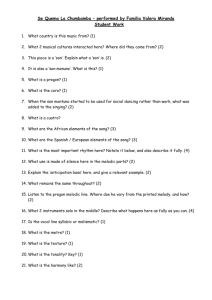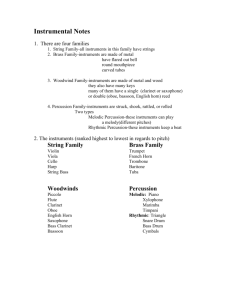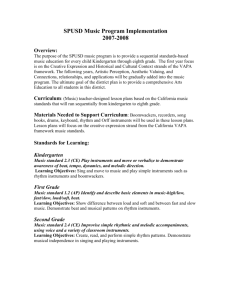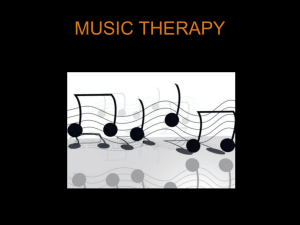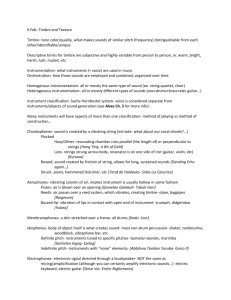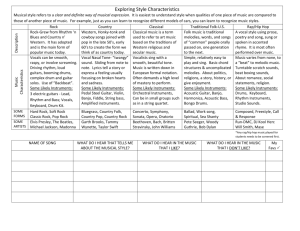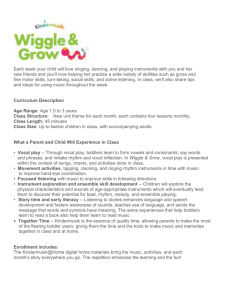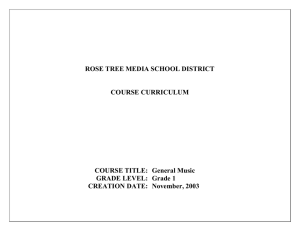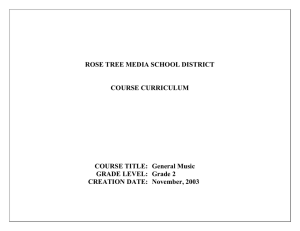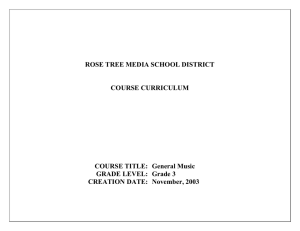Priority Academic Student Skills
advertisement
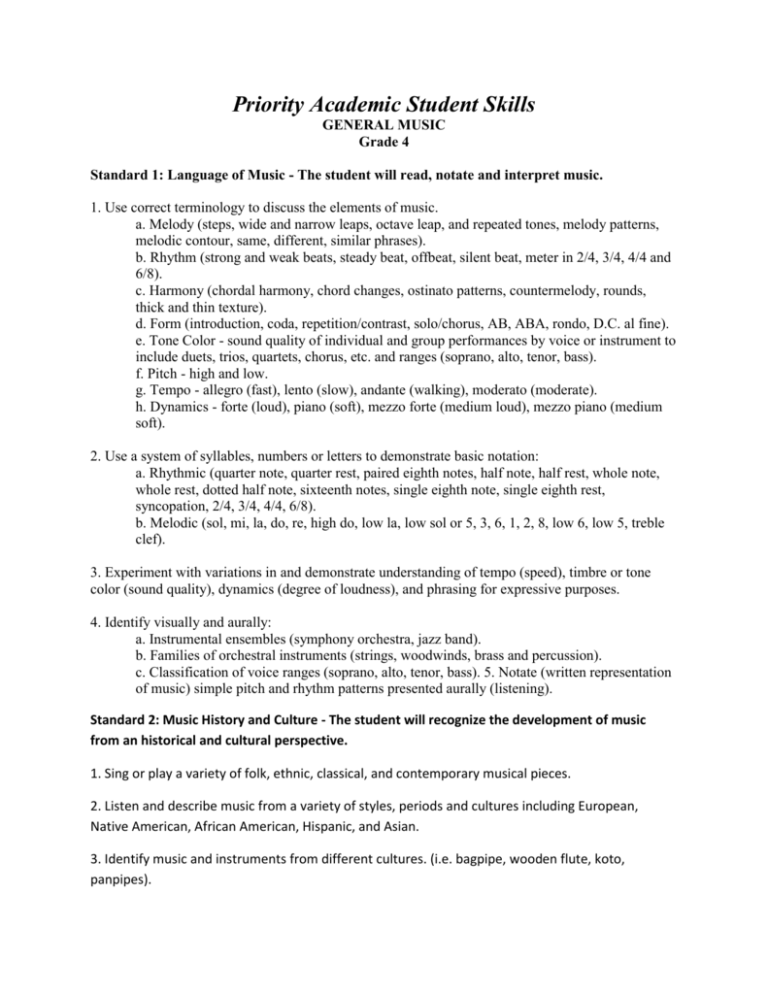
Priority Academic Student Skills GENERAL MUSIC Grade 4 Standard 1: Language of Music - The student will read, notate and interpret music. 1. Use correct terminology to discuss the elements of music. a. Melody (steps, wide and narrow leaps, octave leap, and repeated tones, melody patterns, melodic contour, same, different, similar phrases). b. Rhythm (strong and weak beats, steady beat, offbeat, silent beat, meter in 2/4, 3/4, 4/4 and 6/8). c. Harmony (chordal harmony, chord changes, ostinato patterns, countermelody, rounds, thick and thin texture). d. Form (introduction, coda, repetition/contrast, solo/chorus, AB, ABA, rondo, D.C. al fine). e. Tone Color - sound quality of individual and group performances by voice or instrument to include duets, trios, quartets, chorus, etc. and ranges (soprano, alto, tenor, bass). f. Pitch - high and low. g. Tempo - allegro (fast), lento (slow), andante (walking), moderato (moderate). h. Dynamics - forte (loud), piano (soft), mezzo forte (medium loud), mezzo piano (medium soft). 2. Use a system of syllables, numbers or letters to demonstrate basic notation: a. Rhythmic (quarter note, quarter rest, paired eighth notes, half note, half rest, whole note, whole rest, dotted half note, sixteenth notes, single eighth note, single eighth rest, syncopation, 2/4, 3/4, 4/4, 6/8). b. Melodic (sol, mi, la, do, re, high do, low la, low sol or 5, 3, 6, 1, 2, 8, low 6, low 5, treble clef). 3. Experiment with variations in and demonstrate understanding of tempo (speed), timbre or tone color (sound quality), dynamics (degree of loudness), and phrasing for expressive purposes. 4. Identify visually and aurally: a. Instrumental ensembles (symphony orchestra, jazz band). b. Families of orchestral instruments (strings, woodwinds, brass and percussion). c. Classification of voice ranges (soprano, alto, tenor, bass). 5. Notate (written representation of music) simple pitch and rhythm patterns presented aurally (listening). Standard 2: Music History and Culture - The student will recognize the development of music from an historical and cultural perspective. 1. Sing or play a variety of folk, ethnic, classical, and contemporary musical pieces. 2. Listen and describe music from a variety of styles, periods and cultures including European, Native American, African American, Hispanic, and Asian. 3. Identify music and instruments from different cultures. (i.e. bagpipe, wooden flute, koto, panpipes). 4. Identify and describe roles of musicians in various music settings and cultures. Standard 3: Music Expression - The student will perform, imitate, compose a variety of music within specific guidelines. 1. Participate in music through singing (echo singing, rounds and partner songs) and/or playing instruments (body percussion and melodic ostinatos). 2. Match pitches, sing in tune (C-scale range) and use appropriate tone and expression. 3. Respond to the beat or rhythm in music by clapping, playing classroom instruments. 4. Play simple and syncopated rhythm patterns using sounds and silences on classroom percussion instruments to accompany songs and rhythm activities. 5. Play simple melodies on instruments, such as bells or xylophones. 6. While listening to a musical piece, use directional hand movements to follow the melodic contour (sound or progression of single tones). 7. Respond to unfinished short melodic patterns using voice or classroom instruments. 8. Perform solos and with groups. 9. Sing two-part rounds, partner songs/ostinatos Standard 4: Music Appreciation - The student will learn to appreciate music and expand listening beyond music currently familiar to the student. 1. Recognize and practice appropriate audience or performer behavior appropriate for the context and style of music performed. 2. Demonstrate respect for music performed by the student and by other students and professional performers. 3. Use appropriate terms to explain preferences for musical works and styles.

